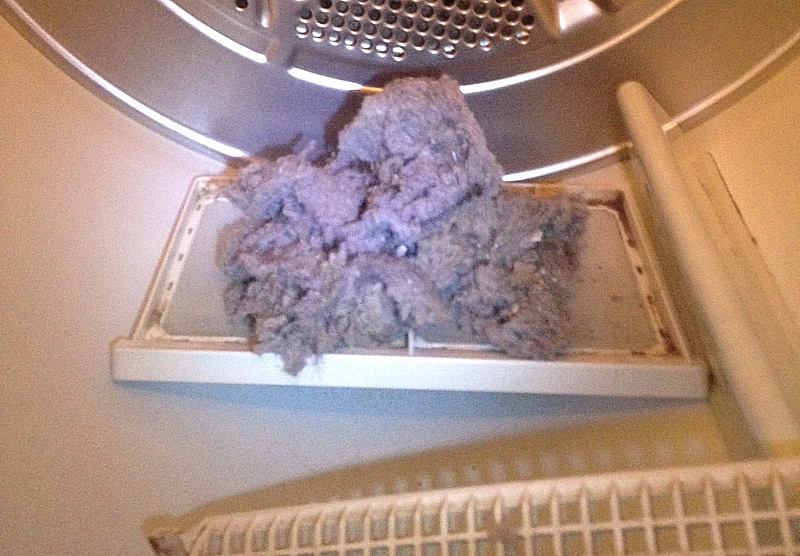
By Andy Brack, editor and publisher | Lint is not something I ever figured I’d write about. But that changed after what I found in our family’s dryer recently.
About a month ago, I started worrying about lint in the dryer. I don’t know why — perhaps I saw something in the news about a dryer fire. Maybe there was an ad on TV about some kind of newfangled lintbuster. Whatever the trigger, I went to a store to buy something to help suck the lint out of the dryer hose, but couldn’t find anything.
![]() So I tried to make something to do the job. I looked on the Internet for some tips and discovered how the magical device from TV to help get lint out of the dryer hose looked like little more than the flexible one-inch tube on our garden fountain. Hmm, I thought, I have extra. I’ll connect that to the vacuum hose and maybe it will work.
So I tried to make something to do the job. I looked on the Internet for some tips and discovered how the magical device from TV to help get lint out of the dryer hose looked like little more than the flexible one-inch tube on our garden fountain. Hmm, I thought, I have extra. I’ll connect that to the vacuum hose and maybe it will work.
It didn’t. So, I removed the lint trap to see if I could use the crevice attachment (the long, skinny thing that you put between sofa cushions to suck out the junk) on the dryer. Voila! It worked. And within seconds, the vacuum sucked out a lintball about the size of a football.
But, I wondered, did I get it all? A little exploring revealed the lint trap slipped into a plastic holder, which could be removed with a Phillips screwdriver. So I took off the holder to enlarge the hole. Then I stuck my head in the dryer and, aided by a flashlight, took a look. Boy, there was a lot of compacted lint at the bottom! With a long screwdriver, I loosened the rest of the lint and sucked it out with the vacuum — again getting enough lint to fill a football. Who knew there would be so much junk down there?
According to the U.S. Fire Administration, there are 2,900 fires annually caused by home clothes dryers. They cause an estimated five deaths, 100 injuries and $35 million in property losses. The leading cause of these fires: Failure to keep dryers clean.
According to a 2012 report, “While much of the lint is trapped by the dryer’s filter, lint is also carried through the vent system along with moist air. Lint is a highly combustible material that can accumulate both in the dryer and in the dryer vent. Accumulated lint leads to reduced airflow and can pose a potential fire hazard.”
Some helpful tips from the report:
- Don’t leave a clothes dryer running when you leave home.
- Clean the lint filter regularly after each cycle.
- Don’t run a dryer when it is loose, damaged or clogged.
Here’s another consumer guide on preventing fires in clothes dryers.
NOTE: The past week’s Statehouse Report column focused on how dark money is seeking to reshape the S.C. Senate.



 We Can Do Better, South Carolina!
We Can Do Better, South Carolina!
























